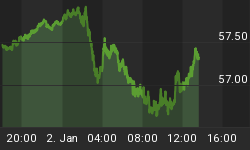Current trends in the US economy are worrying a lot of people -- and so they should. Unfortunately worrying never solved any problems, only action can do that. But in order to solve a problem once must first identify it. Remember that economic trends are the product of deeper forces. For instance, a continual rise in productivity year after year is the fruit of capital accumulation increasing faster than the population. On the other hand, the so-called boom-bust cycle is the result of bad economics.
Whenever the economy turns down the usual response is blame it on demand deficiency. This is pretty tough to do if the downturn is accompanied by accelerating inflation. That the two might even be linked rarely, if ever, occurs to the economic commentariat, and the central bankers aren't much better. But there are always supply-siders waiting to prescribe tax cuts -- which I'm all for -- as an economic panacea.
Supply-side economics has been dismissed by critics as "voodoo economics". These critics are invariably of the opinion that tax cuts are either wasteful or inflationary. The first criticism comes from those who in their arrogance believe that the masses are unable to see to their own affairs, particularly when it comes to personal spending. The second objection is based on pure ignorance of the history of economic thought.
Critics are so obsessed with denying the effectiveness of tax cuts that they will attribute any success the US economy enjoys to anything, including tax hikes and surpluses. This brings us to the nature of supply-side economics and the motives of its critics. For an answer we need to turn to Jean-Baptiste Say, the father of Say's Law of Markets. That Say's law has had a raw deal since Keynes' maliciously misrepresented it in his General Theory ought to go with out saying among economists. Unfortunately an overwhelming number of economists have never read Say and have no intention of ever doing so. To a lot of these economists any economic paper more than 20 years old is not worth reading.
It was Keynes who stated that Say's law meant that supply creates its own demand. Now Say never said this and neither did any other classical economists -- none of them would have been that stupid. What he did was to show what every competent economist of the time knew, and that was that demand springs from production. As the late Professor Hutt put it:
When I sell fruit grown in my garden, what I receive and what the purchaser pays me are the same! But what is equally true, and which illustrates Say's law, is that I dispose of an identical value out of the money's worth I receive from that sale whatever I am destined to acquire in return for it .[Italics in the original]. (A Rehabilitation of Say's Law, Ohio University Press: Athens, 1974, p. 34).
As the classical economists would say: "Supplies constitute demands". Without even mentioning Say's law Benjamin M. Anderson vividly described it thus:
... purchasing power grows out of production. The great producing countries are the great consuming countries. The twentieth-century world consumes vastly more than the eighteenth-century world because it produces vastly more. Supply of wheat gives rise to the demand for automobiles, silks, shoes, cotton goods, and the other things the producer wants. Supply and demand in the aggregate are thus not merely equal, but they are identical [italics added], since every commodity may be looked upon as either supply of its own or as demand for other things. But this doctrine is subject to the great qualification that the proportions must be right; that there must be equilibrium. (Economics and the Public Welfare: A Financial and Economic History of the United States 1914-1946,LibertyPress, 1979, p. 383).
It therefore follows that any economic policy that focused on consumption at the expense of investment would eventually lower purchasing power, meaning real wage rates. As for the qualification that goods must be produced in their correct proportions, this was well known to classical economists. This is why they rightly saw that depressions involved disproportionalities. In other words, the pattern of production had been distorted by credit expansion. What gives rise to increased production, therefore, is not increased consumption but increased investment. It is this and not the demand for consumer goods that raises the real demand for labour and hence wage rates. Obviously anything that hinders investment will retard living standards.
By drawing attention to the destructive effects of heavy capital gains taxes, supply-siders are have brought to light another economic fact that is usually overlooked when politicians argue for tax increases: if you want less of a product, raise the cost of producing it. The reverse follows: If you want more of a product, reduce the cost of producing it. By cutting the cost of production the supply curve moves to the right, exerting a downward pressure on prices and an upward pressure on real wages rates.
As capital gains are profits that can be directed to investment, penalizing them produces less investment which in turn has a detrimental effect on real wages. This is something Democrats do not understand, nor do they want to because power and not prosperity is what they are really about. And this is the key to why supply-side economics is hated. It is because, once properly understood, it works.
Unfortunately supply-siders have failed to realise that they only have half of the equation. By refusing to acknowledge that money is not neutral and that a stable price level is a chimerical goal that generates the very boom-bust cycle that supply-siders aim to eliminate they have played into the hands of their critics. If they want to ultimately succeed they must jettison their crude monetary views.
















